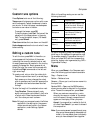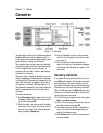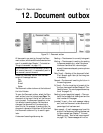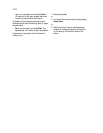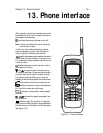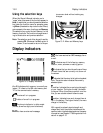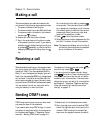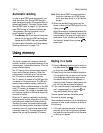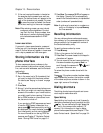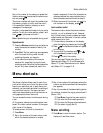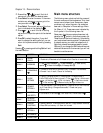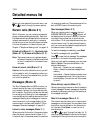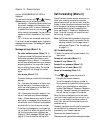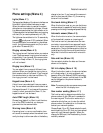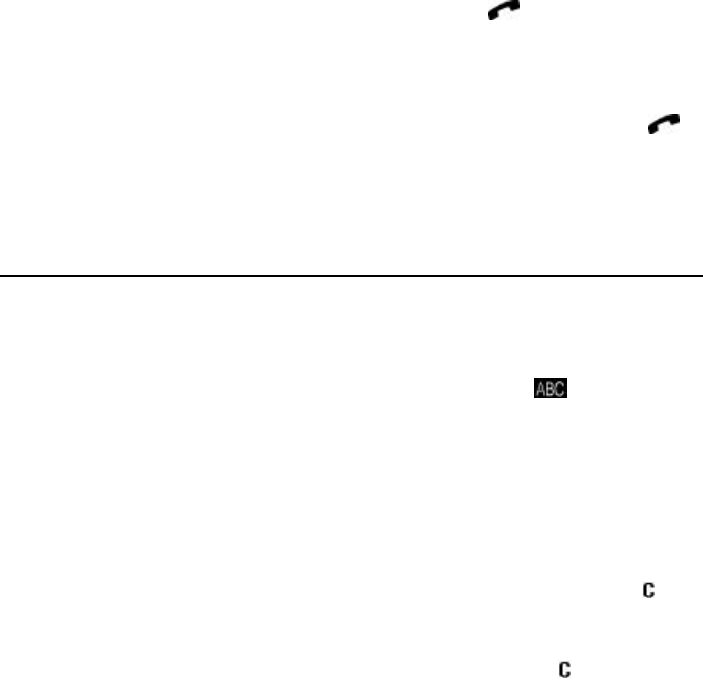
13-4 Using memory
Automatic sending
In order to send DTMF tones automatically, you
must store them first. Storing DTMF strings is
most conveniently done in the communicator in-
terface, see Chapter 3 "Contacts: Contact cards -
Storing DTMF tones" on page 3-4. If you want to
store DTMF strings in the phone interface, see
"Using memory: Storing information via the
phone interface" on page 13-5.
• Press Memory. Key in the name of the contact
card which contains the DTMF service phone
number and the DTMF digits and press Find.
For how to recall information, see "Using memory:
Recalling information" on page 13-5.
Note: When stored DTMF tones are recalled in
the phone interface, only DTMF strings
which have been stored in a Tel field can
be used.
‚ When the recalled string (containing the
phone number and the DTMF digits) is on the
display, press .
After the connection has been established, the
DTMF tones will be sent directly. If you include
the p character, the tones will be sent after a
small pause. If you include the w character,
the tones will be sent after you press a
second time.
Using memory
The phone numbers and names you store are
normally located in the standard memory of the
communicator, indicated by the letter “B” on the
phone interface display.
The “B” memory is the communicator memory,
known as the Contacts directory. When the
communicator is started-up for the first time,
the “B” memory is selected automatically.
The “A” memory is located on the SIM card that
is inserted in the communicator. The SIM card
memory uses numbered memory locations to
store data. When numbers are saved in the SIM
card (“A”) memory, a message will indicate its
location number. The number of standard mem-
ory locations available on SIM cards varies from
one card to another.
When the “A” memory is selected, the phone in-
terface stores all contact information on the SIM
card and cannot access the Contacts directory.
Therefore, the use of the communications appli-
cations of the communicator interface will be less
convenient (you will have to enter most contact
information manually). This users’s manual will
assume that you use the standard “B” memory.
Keying in a name
• Press the Memory selection key to switch to
the alpha mode (the indicator is shown
on the phone interface display).
‚ Press the key that has the desired character.
If the character that you want is not the first
to be displayed, press the key again within
one second (before the cursor appears) to
display the next character. Keep pressing the
key until the desired character appears.
ƒ If you miss a character, keep pressing the key
until it appears again; or first press and
then start pressing the key again.
To enter a space between characters, press .
To correct a mistake, press .
Once the desired character is on the display and
you want to enter a new character, do either of
the following:
1. If the next required character is located on
some key other than the previously pressed
key, press the new key and the first character
on the key will appear.
or



